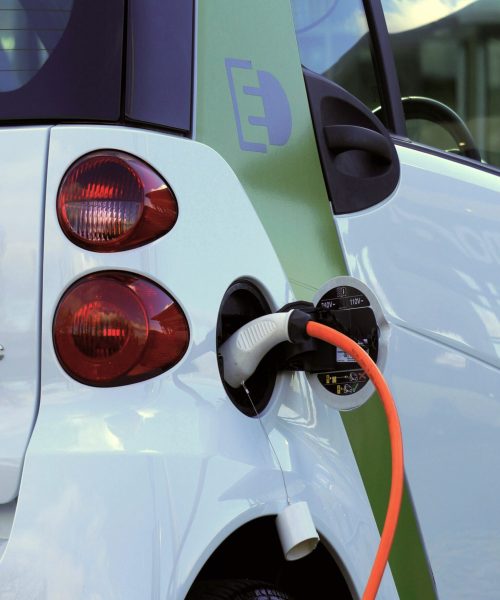Circular Economy Consulting: Building a Sustainable Future for Mobility
The transition to zero-emission transport goes far beyond tailpipe emissions; it’s about transforming the entire lifecycle of vehicles and infrastructure. A true sustainable mobility system must be circular. Cenex Nederland is at the forefront of this evolution, providing expert guidance on implementing circular economy principles—from eco-design and Life Cycle Assessment (LCA) to second-life applications and circular procurement.

Why the Circular Economy Matters for Mobility
A linear “take-make-dispose” model is unsustainable in a world of finite resources. The mobility sector, a major consumer of raw materials like lithium, cobalt, and steel, has a critical role to play in the circular transition. By extending the life of products and components, designing for reuse and repair, and creating value from waste streams, we can reduce dependency on virgin materials, minimise environmental impact, and build more resilient, cost-effective transport systems. With ambitious goals like the Netherlands’ plan for a fully circular economy by 2050, circularity is now a strategic imperative.
Comprehensive Circular Economy Services
As a consultancy specifically focused on the circular economy with regards to mobility, Cenex Nederland provides deep, specialised expertise:
- Life Cycle Assessment (LCA) & Eco-Costing: Quantifying the full environmental footprint of vehicles, components, and infrastructure to identify impact hotspots and guide sustainable design choices.
- Eco-Design Strategy: Utilising tools like our iEDGE toolkit developed in the LEVIS project, we help manufacturers and new product designers embed circularity requirements as per ESPR into the product design phase.
- Circular Procurement Support: Assisting public authorities and businesses in developing and evaluating tenders that prioritise circularity, ensuring investments are sustainable and future-proof.
- Second-Life Battery Strategy: Providing market analysis, business model development, and technical feasibility studies for the reuse of EV batteries in stationary storage and other applications.
- Circular Transition Roadmaps: Helping organisations develop strategic plans to shift from linear to circular business models, aligning with regulations like the Ecodesign for Sustainable Products Regulation (ESPR).
Proven Track Record in Circular Mobility Innovation
LEVIS project
The LEVIS project develops lightweight multi-material components for electric vehicles to improve efficiency and reduce CO2 using eco-design and circular economy principles. It showcases demonstrators like suspension arms and battery housings with advanced composites. Cenex NL leads eco-design methods and life cycle evaluations to ensure environmental and cost benefits.
LEVIS project
The AeroSolfd project develops retrofit filters to cut NOx and particulate emissions from exhaust, brakes, and semi-enclosed spaces for all vehicle types. It demonstrates these solutions in eight European cities to improve air quality by 2025. Cenex NL leads sustainability assessments and life cycle analyses to support product improvement and policy guidance.
Circular EV Charging Infrastructure with NKL
Cenex Nederland partnered with the National Knowledge Platform for Charging Infrastructure (NKL) to map the path toward a circular EV charging industry in the Netherlands. We convened industry leaders and policymakers in roundtable discussions to identify key opportunities and barriers, positioning Cenex as a central facilitator in this national transition.
SESA project
The SESA project develops sustainable, affordable smart energy solutions to boost access to clean electricity in African communities. It pilots innovations like renewable microgrids and energy storage in diverse regions, supporting local capacity-building and business models. Cenex NL contributes by performing LCA’s, developing sustainability assessment frameworks and guiding deployment strategies for effective, scalable impact.
Specialized Circular Economy Expertise
We support a wide range of organizations in creating a circular mobility ecosystem:
- Public & Regional Authorities: Embedding circularity in public transport and infrastructure procurement.
- Automotive & Component Manufacturers (OEMs): Implementing eco-design principles and planning for end-of-life value retention.
- Fleet Operators: Developing strategies for vehicle life extension, repair, and sustainable end-of-life management.
- Energy & Battery Sector: Creating viable business models for second-life battery applications.
Ready to Close the Loop?
Achieving a circular economy in mobility is a complex, multi-stakeholder challenge that requires a holistic perspective and deep technical knowledge. Cenex Nederland provides independent,
Contact our circular economy specialists to find out how we can help you build a more sustainable and resilient future.

Shiva Noori
Team Lead Circular Mobility
Shiva is the Team Lead Circular Mobility, bringing her engineering and industry experience into research and consultancy. Concerned about resource and waste flows in the energy transition? She’s always open to discuss circular solutions for your product or organization.
+31 (6) 15472760
Frequently Asked Questions
It’s a systems-level approach that aims to eliminate waste and maximise the value of resources in the transport sector. Instead of a “take-make-dispose” model, it prioritises strategies like extending product life (repair, refurbishment), reuse (second-life batteries), sharing models, and finally, high-value recycling.
An LCA is a methodology for assessing the environmental impacts associated with all stages of a product’s life, from raw material extraction to manufacturing, use, and disposal. It is crucial for identifying where the biggest environmental burdens lie and for making informed, data-driven decisions to reduce them.
When an electric vehicle battery reaches its end-of-life for automotive use (typically at 70-80% of its original capacity), it can be repurposed for a “second life” in less demanding applications, such as stationary energy storage for homes, businesses, or the electricity grid. This extends the battery’s useful life before it’s recycled.
Public authorities can embed circular criteria into their tenders for vehicles, infrastructure, or mobility services. This can include requirements for recycled content, modular design for easy repair, take-back schemes, or service-based contracts (e.g., “Lighting-as-a-Service”) that incentivise durability and longevity.
The ESPR sets new requirements for products sold in the EU to make them more durable, reusable, repairable, and energy-efficient. It introduces measures like the Digital Product Passport, which will provide information on a product’s origin, composition, and repairability, impacting vehicles and their components.
Key challenges include designing complex products like cars for easy disassembly and repair, creating efficient reverse logistics to collect used products, ensuring the quality and safety of reused components, and developing viable business models that reward longevity over disposability.

